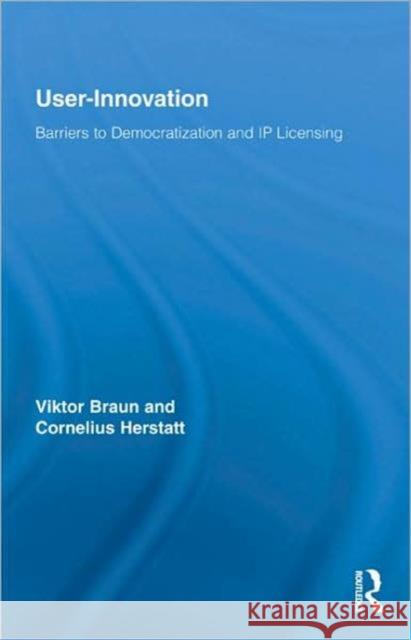User-Innovation: Barriers to Democratization and IP Licensing » książka
User-Innovation: Barriers to Democratization and IP Licensing
ISBN-13: 9780415777193 / Angielski / Twarda / 2009 / 254 str.
User-Innovation: Barriers to Democratization and IP Licensing
ISBN-13: 9780415777193 / Angielski / Twarda / 2009 / 254 str.
(netto: 692,55 VAT: 5%)
Najniższa cena z 30 dni: 705,23
ok. 22 dni roboczych
Dostawa w 2026 r.
Darmowa dostawa!
Economic growth is highly dependent on technological progress and innovation, yet the sources from which these innovations originate are still largely misunderstood and untapped. Recent research has demonstrated that users, rather than manufacturers, are often a critical source of innovation in numerous fields from extreme sports to medical devices to software. This book systematically identifies the most important barriers to user-innovation and critically evaluates the democratization of innovation argument by critically assessing the main legal, economic, technological, and societal barriers to user-innovation for the first time and proposing alternative possibilities. Through original research the author reveals the dynamics of user-innovation and offers strategies for minimizing those factors that inhibit and stifle the spread of this phenomenon. From this analysis it becomes clear that user-innovation has become more difficult over time and that the problem is now of how manufacturers can enable users to overcome the discussed barriers and simultaneously benefit from such consumer-driven activities. Arguing that licenses are not just an important technology commercialization instrument but are tools critical to generating innovations, the author explains how licenses can in certain situations be employed to help users overcome some of the barriers to user-innovation. User-Innovation: Barriers to Democratization and IP Licensing is a practical guidebook as well as a startlingly original work of scholarship that will be essential reading for years to come.
User-innovation is an important area of research which has so far largely been considered in terms of its success and potential. In numerous areas users have been depicted as a critical source of innovation, without asking why this is not the case in other realms. While the factors that could increase the extent of user-innovation, and thereby lead to a democratization of innovation have been considered in depth, the factors that could inhibit and stifle the spread of this phenomenon have largely been ignored.
This book systematically identifies the most important barriers to user-innovation, evaluates the democratisation of innovation argument and proposes an alternative possibility, portrays the dynamics of these barriers by demonstrating that they vary over time, shows that licenses are not just an important technology commercialisation instrument, but that they can also be critical tools to generate innovations, and explains how licenses can in certain situations be employed to help users overcome some of the barriers to user-innovation.











